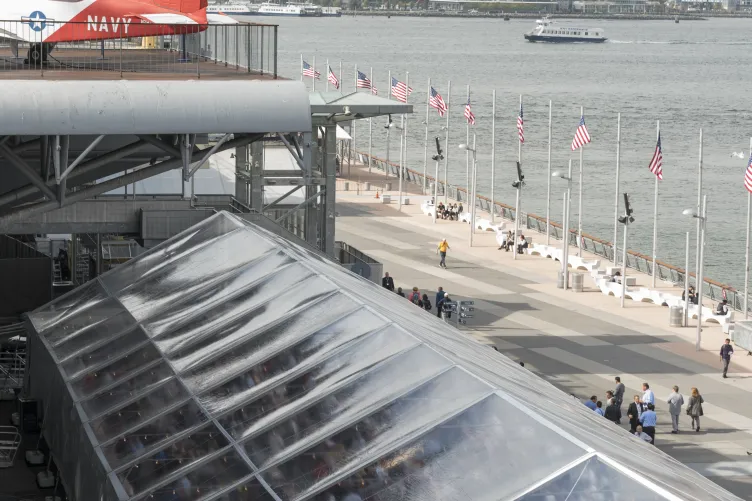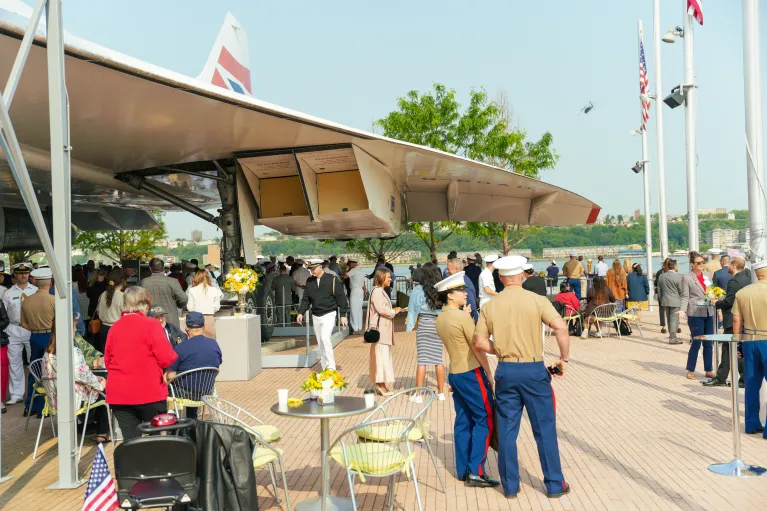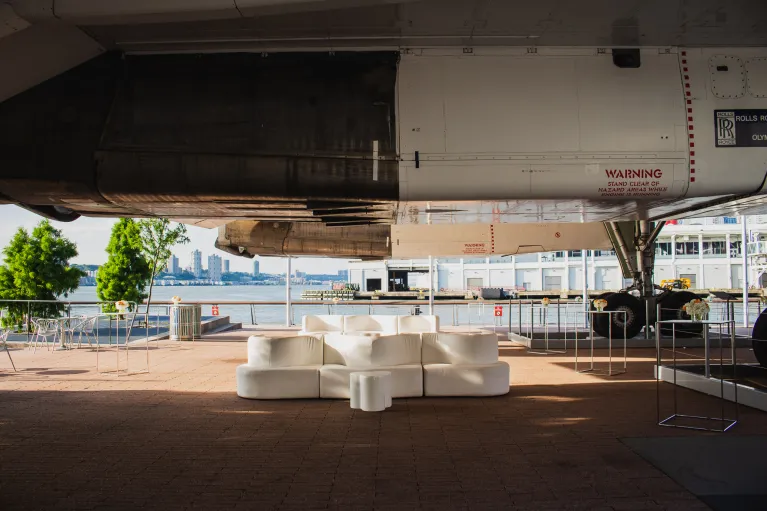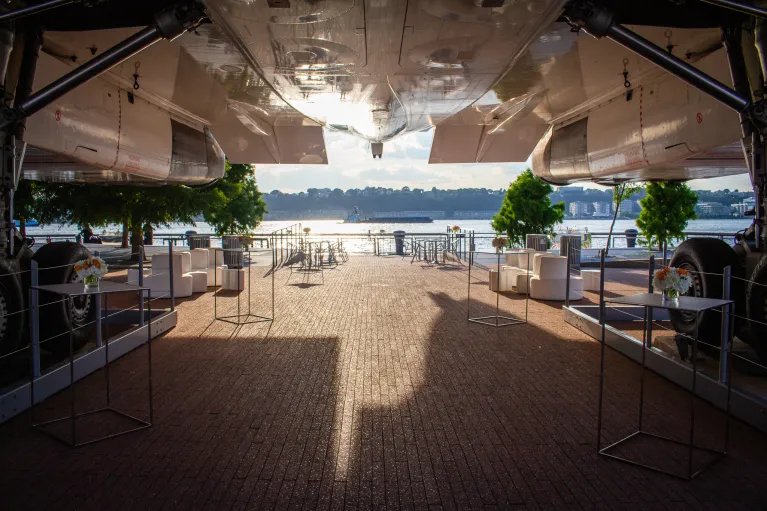

Pier 86
Enjoy waterfront views and an impressive backdrop of Intrepid for concerts, large productions, charity walks or any other large outdoor event you dream up. Maximum Occupancy: 3,000
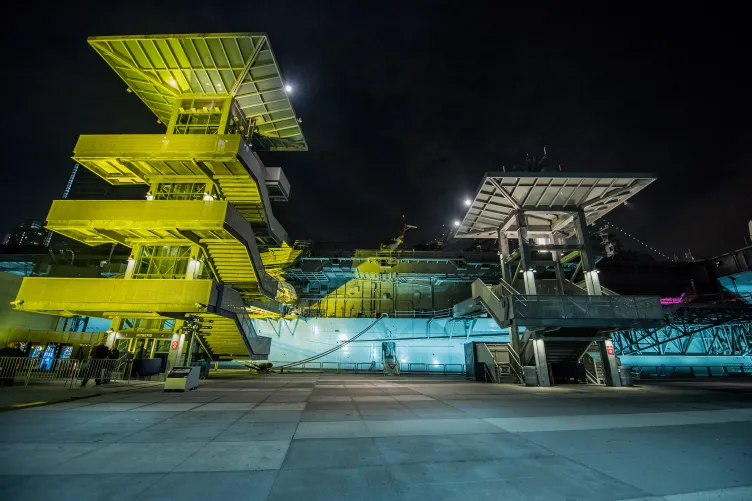

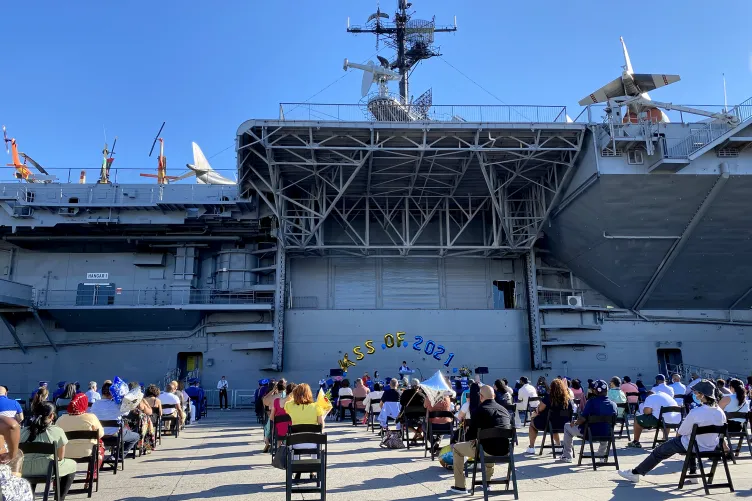


Take pleasure in festivities with the ship as your backdrop. The space between the ships towers is perfect for a red carpet arrival, product launches and ceremonies, or include a tented footprint for your next outdoor seated dinner or reception.
Enjoy incredible views of the sprawling Hudson River in the Concorde plaza for smaller events and cocktail hours, host your sunset reception under the British Airways Concorde for a one-of-a-kind experience or give your guests a closer look at life onboard Concorde by adding on guided tours of the first-class cabin.
View and download our Pier 86 floor plan to get a closer look at the room and options you have to make this space your own and leave guests in awe.
When you book Pier 86, you can choose from a range of professional services from our preferred vendor list that will help you bring your event to life.




